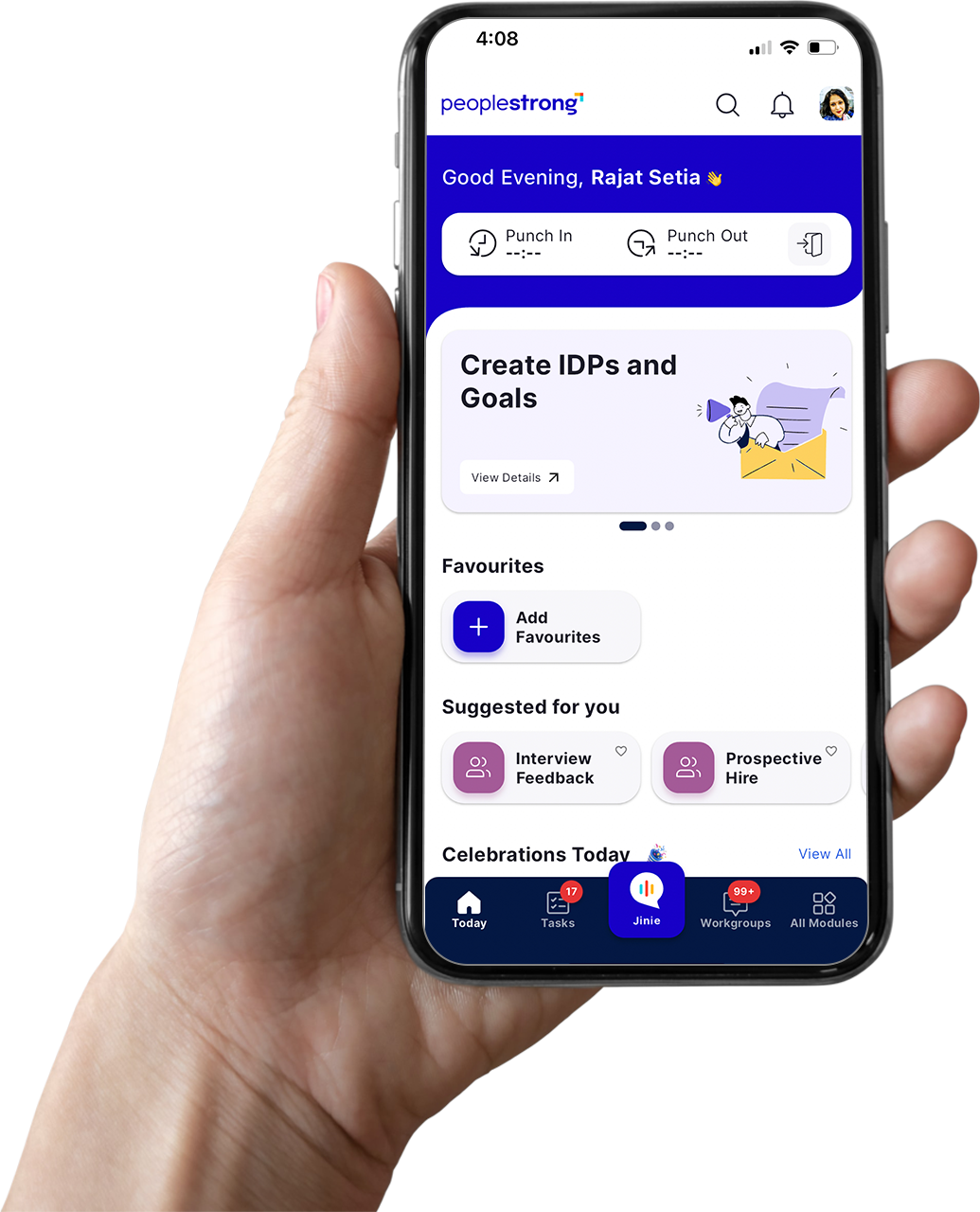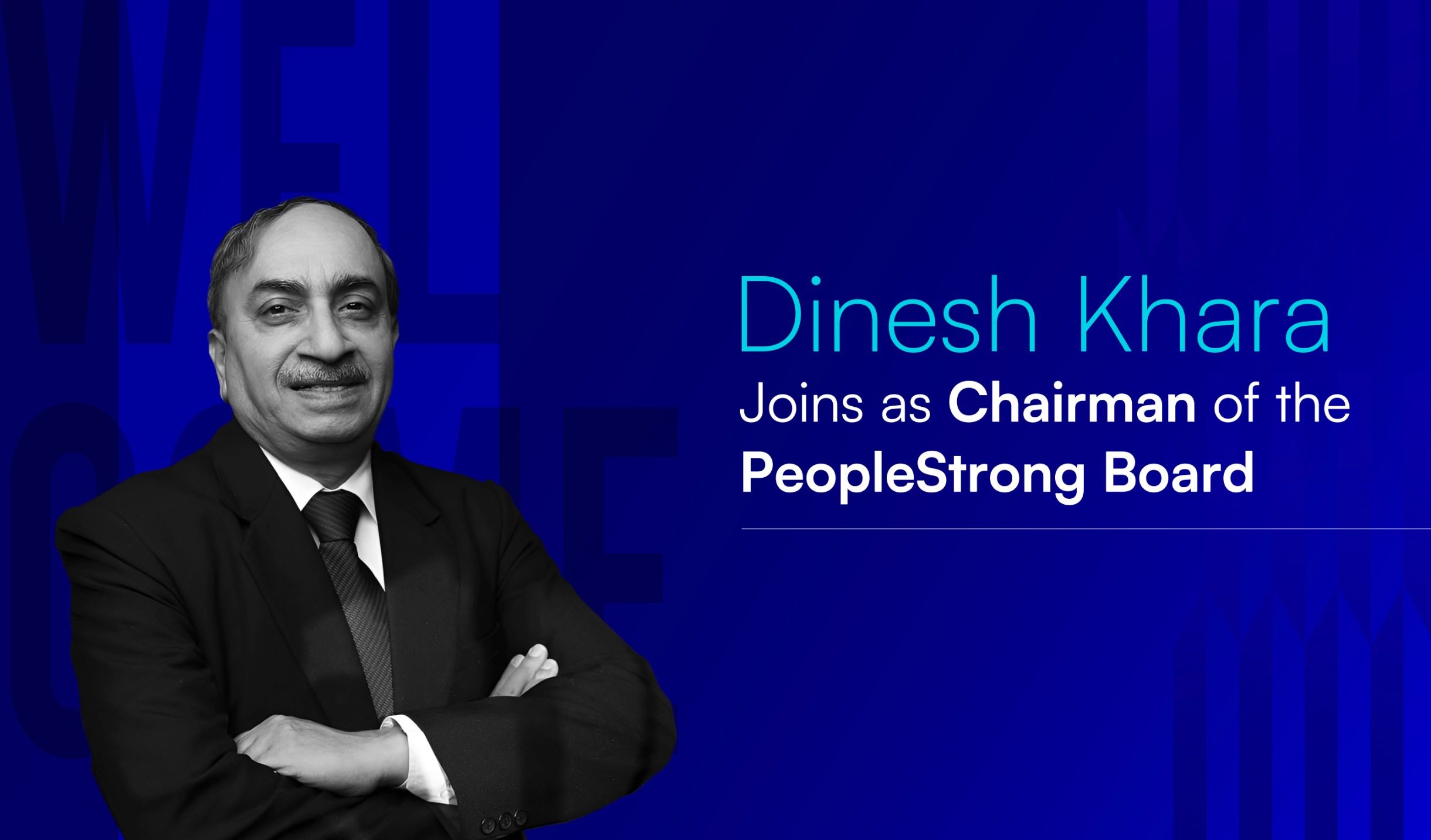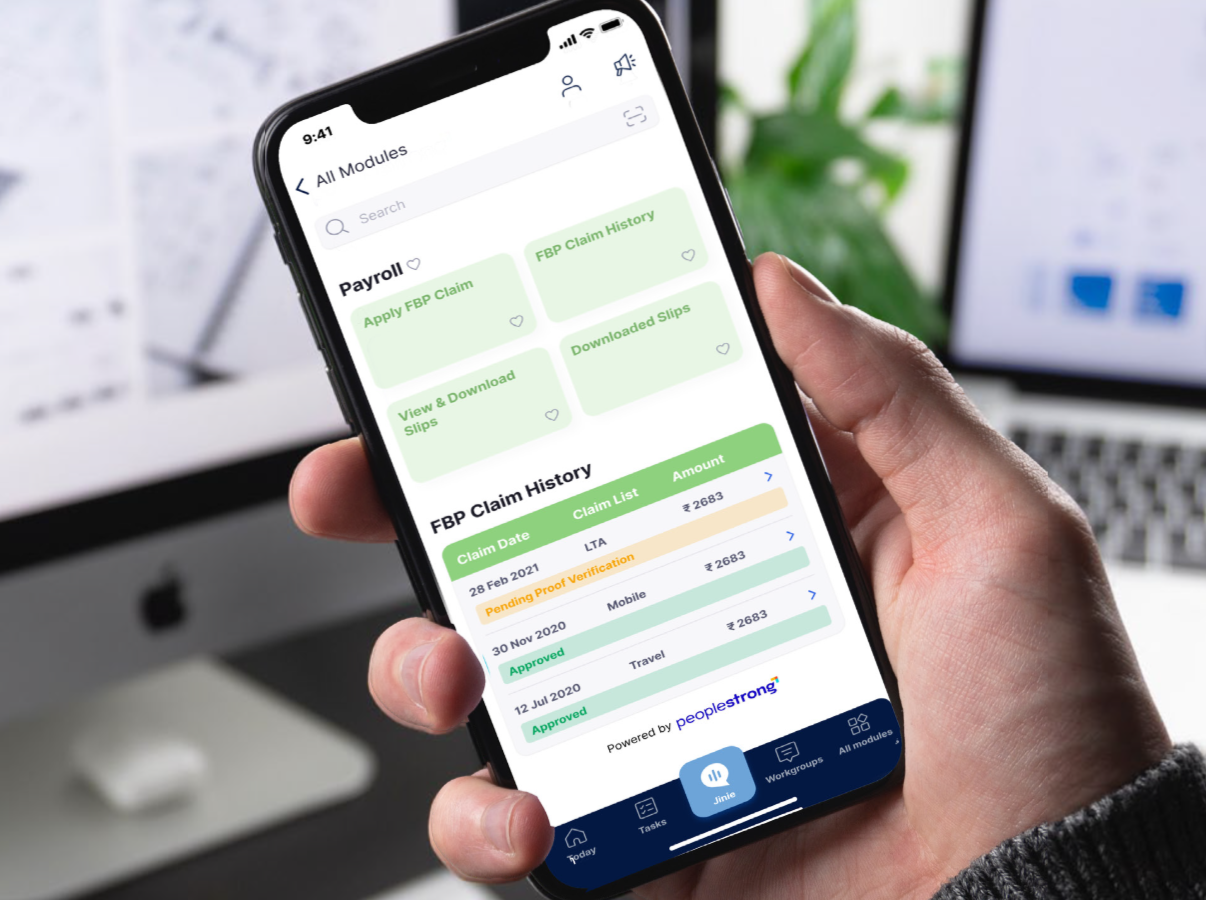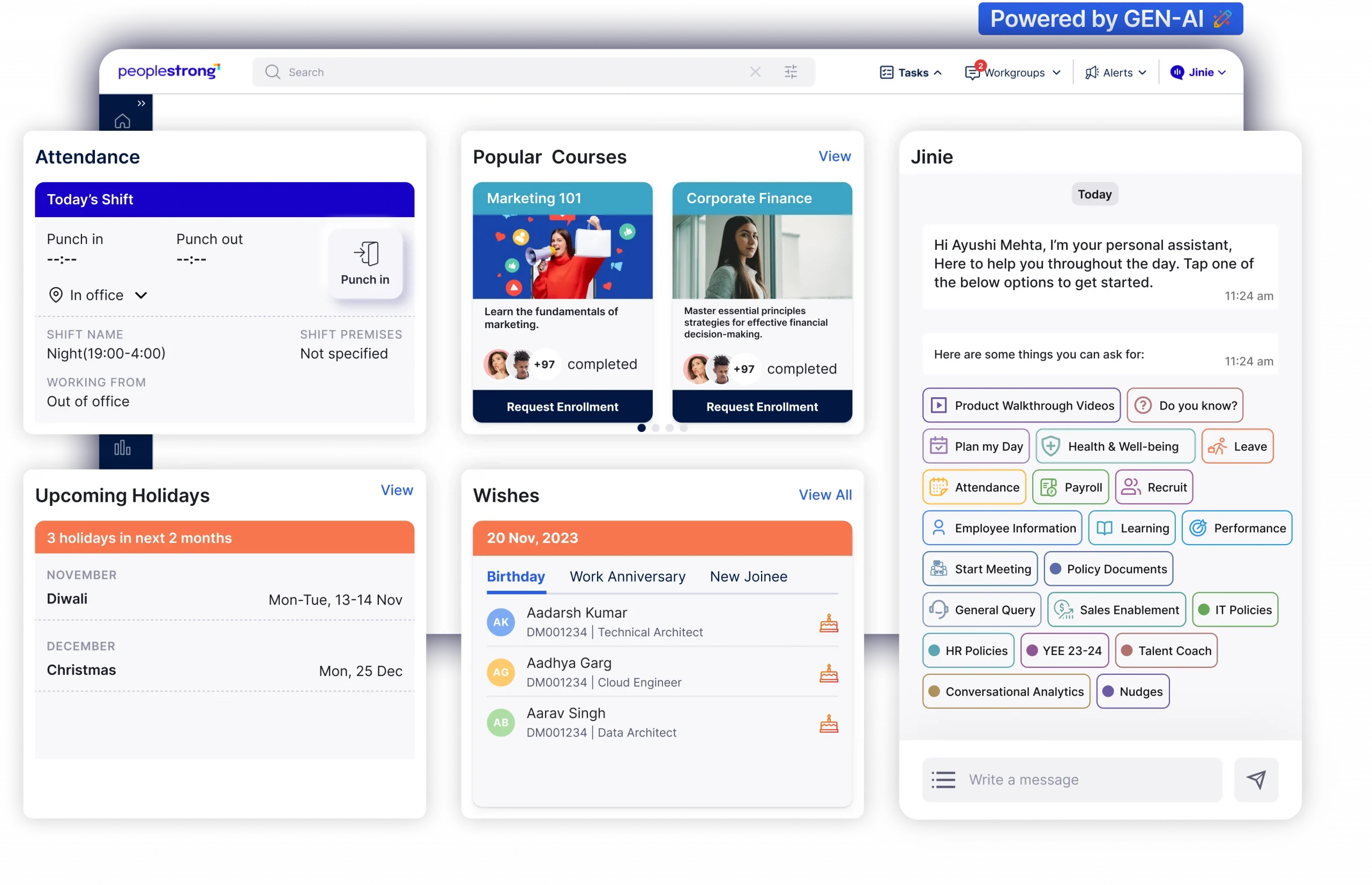Did you know the highest priority of investment for the next two years for HR leadership, especially enterprises is a unified HR delivery tool and experience suite? 36% of HR leaders agree that it’ll increase their ability to attract, develop, and retain talent, and 31% believe it’ll enable a globally harmonized HR operating model (Source). All this is possible only if the tool is implemented right, with proper planning, flawless implementation, and regular course correction in place.
More than 50% of organizations in the ISG survey are struggling to achieve clear business value from implementing HR technology. When it is a question of investing significant digital transformation budgets, this is quite alarming Between low adoption rates and a broken employee experience due to disjointed apps, the cost of bad implementation is more than just the amount of money invested to procure the tool. The writing on the wall is clear- you cannot afford a botched implementation!
Let’s change that narrative for you. Here’s a foolproof plan that’ll put you on the right course from the get-go, and ensure you see positive results at every stage, and a whopping adoption rate after going live.
Suggested E-book:
The Ultimate HR Tech Stack Implementation Checklist
The 8-Step, Future-Ready, Foolproof Plan for Your HR Tech Implementation
Every step needs to be planned meticulously to ensure nothing is left to chance or falls through the cracks.
Starting early, establishing checklists, and accountability matrices, and getting stakeholder buy-ins are absolutely vital to the success of your implementation project.
Let’s go over the following steps that can certainly cement your implementation success if done right.
1. Project Initiation
Once you onboard the vendor, it’s time to carve out the scope of work that the HR tech vendor will deliver for you. Setting agreed timelines, and project charter to ascertain step-by-step process and deliverables, setting acceptance criteria for each stage, and validate outcomes are some of the critical steps in the planning process.
It’s easy to rush this step, or worse, overlook it altogether, to save time or simply get started. Spending a major chunk of time in this stage will save you countless hours and thousands of dollars at least.
Once the macro and the micro level plans are in place, figure out stakeholders who will manage different levels of the implementation program. Who will be involved in the steering committee is an important decision. You need inputs from various stakeholders in the organization including your CXO suite, IT, people managers and end users. Having a diverse committee helps you bring in various perspectives and take important decisions quickly.
Once you identify all the people necessary to steer and drive the project to success, promptly carve out their roles and responsibilities, and establish clear deliverables from each stakeholder at every stage. Establish communication protocols, channels, recurring review meetings, and escalation matrices before the project kicks off.
Why is this step important?
Lidl, a German supermarket chain had an astounding 7 year ERP implementation cycle.
the chosen vendor couldn’t adapt the system to the business requirements, so the business experienced time and budget overruns, and operational disruptions. The main reason cited for the failure was the company not identifying the right resources to support and execute the project.
2. Requirements Gathering (Workshops)
Once the project deliverables are agreed upon, the next crucial phase is to identify the various processes and policies to be mapped onto the HR tech stack. It is important for HR teams to map both current and future roadmap for their people processes that allow them to manage high-potential talent now and in the future effectively using the HR tech stack.
Instead of configuring only the current processes, and later changing the entire gamut again in a couple of years, the best practice is to find the middle ground between where you are, and where you want to be in the next 3-5 years and configuring a futuristic HR process workflow in the tech stack. If you use a bunch of tools for each HR function, talk to your vendor about creating a seamless integration ecosystem.
About 17% of respondents in the 2022 PwC survey said high integration complexity is a major reason holding them back from implementing an HR tech stack successfully. It’s also why 27% stated they wanted to switch vendors at the end of the subscription term.
Proactively plan how you’ll integrate them, talk to the service providers, find middleware, and if you need to optimize a particular process to smoothen things, consider doing itas part of process improvement.
Bring in internal or external experts to identify your current pain points, figure out solutions using design principles, and align them to business objectives. Ensure to get user feedback for every new process you bring in.
This is also the phase where you ascertain which custom requirements you need your tech vendor to offer if possible on the tool, or what workarounds are possible to meet your needs as much as possible.
Why is this step important?
Woolworths, an Australian supermarket tied up with a famous ERP provider , but failed colossally. One of the main reasons for the failure was the company not documenting or taking the time to brainstorm what their business was going to look like in the next 3-5 years. This mistake cost them dearly, and the system they implemented neither served the existing process nor helped them future-proof their company.
3. Data Sharing
Since HR deals with a lot of sensitive data, preserving the sanctity, accuracy, and thoroughness of data is of the highest importance. If any data is lost or mapped incorrectly, chaos will ensue.
That’s why it’s essential to double down on data collection, verification, and validation before uploading it onto the tech stack. Start by creating comprehensive data validation and sharing templates, with clear instructions on the process, and correctness criteria the team has to follow.
Assign the right people to collect data and another set of people to verify its accuracy, to ensure no one overlooks any aspect due to information overload. Wherever there are interdependencies in the process, get project managers and functional experts to confer with each other and ensure there are no overlaps, duplications, or deletions. To make this even smoother, consider securely organizing and sharing files through a data room, which simplifies collaboration during large-scale HR tech implementations. Discern how the system will make room for existing data and accept new incoming data.
4. System Configuration
The old system, or the legacy software you’re using will map data, have fields and functionalities that will be entirely different from the one you’re replacing it with.
For example, if you’re onboarding a candidate and you want the candidate’s employee ID automatically assigned to them after they accept the offer, and your new HR tech tool only assigns the number during onboarding, you may need to look for a workaround. It’s simple and minute details like these that can cause you a lot of headaches.
Make sure you take an incremental approach to configuring processes and migrating data, so you can always pause, course correct, and proceed if needed. Have a backup and rollback plan to help users get accustomed to the new tool while wrapping up operations in the old tool. This phase also gives you breathing room to sort out any anomalies in data.
5. System Testing (User Acceptance Testing)
Studies say 32% of tech administrative teams feel that the challenging part of UAT testing was designing those tests. This is a vital step that will determine how successful your implementation will be. Mapping out a comprehensive testing strategy covering critical use cases will be a great advantage in the long run.
Before getting the users to test the tool, make a comprehensive list of test cases you need your people to test. Encourage negative testing to make sure all possible use cases of that particular process are ruled out for good. Make sure these cases align with the business process you’ve brainstormed and outlined in the previous phase. Next, train users on how to test these use cases in the tool, and how to document their feedback.
Remind them to compare the post-testing feedback to the process improvement input they shared in the requirement-gathering phase and see if those needs are met. Use this crucial piece of feedback, and change requests to fix any issues the users report, mandate another round of testing, and seek feedback, to compare performance before and after changes were made.
Why is this step important?
Waste Management, a waste management and recycling company in the US, ran an ERP implementation program that overran the scheduled time (which was originally 18 months) and budget and caused heavy losses due to disruption in day-to-day operations.
One of the main reasons for these heavy losses is the company didn’t raise change requests and test them promptly in the UAT phase and didn’t give the required number of competent resources to oversee the implementation project.
6. Product Migration
This is the penultimate stage where you cross the ts, dot the is, and move to the launch. Before making the leap, make sure your tool and the internal team have the capacity to handle an influx of support requests in the days following the launch.
Review all change requests that came in during production and UAT, and check if they have been taken care of. Ensure that all the feedback loops have been closed positively. Conduct a smoke test to see if the tool is airtight. Check if it’s robust enough to handle large traffic after the launch.
Having a contingency plan in case of unforeseen issues will also help. Planning for all possible outcomes will help you ensure a smooth transition. Create excitement around the new tool and launch a few initiatives for early adopters to take part in, share their experiences, and create a buzz around employees.
How do you plan to decommission your existing HR tool? Assess how many days remain in your current tool decommissioning period, and ensure that the team is recording their transactions in the new system, so no precious data is lost in transition. Having a few days of overlap between the two tools helps your team make the shift.
Why is this step important?
MillerCoors, a beer brewing company in the United States, initially started off their implementation project well, and it seemed to go hassle-free. But, only when they were prepared to go live did they find out that the project delivery team had thousands of open items to be addressed, and most of them were critical items that were absolutely essential for smooth functioning. Since they couldn’t stall the launch, they went ahead with it anyway but faced a severe backlash after.
7. Go-live
All your preparation for months is ready to yield results as you are ready to go live. Pick a date when you aren’t likely to see a mass exodus of transactions (say, the joining date of candidates of a mass recruitment drive, performance review season, etc), to minimize issues and have the time for people to actually go through the tool.
Change management is paramount to see a high adoption rate after going live. However, 28% of HR leaders had no change management budget factored into HR tech plans. This is a recipe for disaster. No one likes change, inherently. Not unless we see clear value in the change and the motivation for it. Change management is important for any tech change, to show people why they need to move from a tool they’re comfortable with to a rather new tool they’ll have to learn from scratch. If your team is already swamped and can’t make time for these initiatives, bring in an external vendor to do it. Either way, it shouldn’t be placed on the back burner.
Adapt training videos, materials, and resources for different generations of employees, if you have a multi-generational workforce. Have your CEO champion the cause and help secure everyone’s buy-in. Carry out a soft launch by releasing the tool to a small group, preferably the senior management, to get their candid feedback on it before releasing it to the larger group. Prepare a risk mitigation plan along with your vendor and ensure you have a solid backup for any contingency and get it signed off by all stakeholders IT, department heads, operations heads, etc.
What not to do?
Hershey’s, the renowned chocolate manufacturer, implemented ERP for its business and made the huge mistake of going live during the peak season. Since the rollout was during Halloween, a busy time when the orders kept flooding in, the system couldn’t handle it, and the gaps in the UAT feedback loop that were overlooked led to a cascade of errors and losses.
8. Hypercare
The best way to spread positive word about the tool around the company and get more people interested in using it is to provide impeccable support and service for at least 30 days after launching the tool, so people gain some confidence in it. This is where hypercare helps. Define your hypercare period, depending on how much the vendor offers and what your team needs.
Once people start using the tool, your inboxes are going to flood with help requests and tickets. You’ll need your A-team to meet these requests. Aside from the HR team, make certain your IT personnel is available, network administrators, managers, and team leaders are equipped with manuals, and other resources to give first-level solutions to the employees, before reaching out to you. If you see a pattern of questions arise about a particular feature, talk to your vendor and have them create an exclusive video on it.
If a particular issue can’t be resolved by the first line of defense, and the user wants immediate resolution, define escalation pathways for them to get the right solution at the right time. Knowing you have their back at all times and go above and beyond to get issues sorted is a surefire way to cement their trust encourage them to use the new tool extensively, and spread word about it to their team members.
Suggested E-book:
The Ultimate HR Tech Stack Implementation Checklist
How Can PeopleStrong Ensure a Foolproof Implementation for You?
Mrigank Tripathi, President of Growth at PeopleStrong says a comprehensive HCM can give you a superlative employee experience, by aligning your implementation outcomes with your vision.
The PeopleStrong team has ensured smooth implementation in 500+ enterprises like yours, including TATA, PayTM, ShadowFax, Biocon, Larsen and Toubro. We have 3000+ integrations running successfully across all customers.
With a dedicated in-house implementation team comprising subject matter experts and seasoned project management professionals, phase-wise workshops to gauge your needs while offering industry-leading solutions, and a steering committee with the leadership, you’re sure to have a fulfilling, value-driven, and easeful implementation without being another task you have to manage despite your team’s hectic schedules.
At PeopleStrong, customer happiness is at the heart of everything we do. Our experts work in tandem with our clients to deliver complex implementations on time and drive value to business.
Get in touch with our sales team to schedule a quick demo today.











